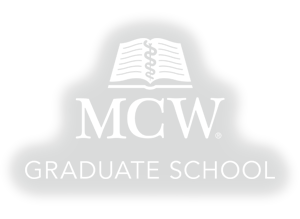
Darcy Knaack
Postdoctoral Fellow, Elizabeth Sweeny Lab
Locations
- Biochemistry
Contact Information
Biography
Year Entered MCW: 2016
Previous Education: BS, Biology, University of Wisconsin-Madison
Research Interests
The prevalence of obesity in the United States continues to rise in both adults and children on an annual basis. Obesity is a risk factor for a multitude of chronic diseases, including type 2 diabetes and cardiovascular disease, among others. Adipocytes, the primary cells for fat accumulation, contain lipid droplets that expand in response to taking up excess circulating triglycerides as a protective mechanism to prevent organ lipotoxicity. Adipocytes contain approximately a quarter of the body’s pool of free cholesterol but have a reduced ability to synthesize its own cholesterol. Therefore, adipocytes rely heavily on circulating lipoproteins to acquire the necessary amount of cholesterol for hypertrophic expansion. This also means that cholesterol transport is an essential determinant for adipocyte function. However, there remains a significant knowledge gap regarding the mechanism and regulation of cholesterol transport in adipocytes.
Scavenger receptor class B type I (SR-BI) is considered to be cardio-protective due to its prominent role in binding of high-density lipoproteins (HDL) and its participation in bi-directional cholesterol transport – specifically, the selective uptake of HDL-cholesteryl ester (HDL-CE) and efflux of free cholesterol between lipoproteins and cells. In collaborative studies, our lab has demonstrated that SR-BI-mediated HDL-CE uptake in the liver requires the extracellular matrix protein, procollagen C-endopeptidase enhancer protein 2 (PCPE2). PCPE2 is an extracellular matrix protein that is highly expressed in heart and adipose tissue, but its role in cholesterol transport and its impact on obesity remain unexplored. These published studies have prompted a hypothesis that PCPE2 facilitates SR-BI’s cholesterol transport functions to regulate adipocyte cholesterol homeostasis.
My research is aimed to determine the mechanism by which PCPE2 may be facilitating SR-BI oligomerization in adipocytes, a process that is required for cholesterol transport, and to investigate the mechanisms by which PCPE2 may impact SR-BI-mediated signaling and membrane localization. We anticipate that the findings from these studies will help identify novel information that will help us better understand the mechanisms driving obesity, cardiovascular disease, and other complications that arise from these conditions.
Publications
Aurubin, CA; Knaack, DA; Sahoo, D; Tarakanova, VL. Low-density lipoprotein receptor (LDL-R) suppresses endogenous cholesterol synthesis pathway to oppose gammaherpesvirus replication in primary macrophages (2021). J. Virol. doi: 10.1128/JVI.00649-21.
Chen, Y; Yang, M; Huang, W; Chen, W; Zhao, Y; Schulte, ML; Volberding, PJ; Gerbec, Z; Zimmerman, MT; Zeighami, A; Demos, W; Zhang, J; Knaack, DA; Smith, BC; Cui, W; Malarkannan, S; Sodhi, K; Shapiro, JI; Xie, Z; Sahoo, D; Silverstein, RL. Mitochondrial metabolic reprogramming by CD36 signaling drives macrophage inflammatory responses (2019). Cir. Res. doi: 10.1161/CIRCRESAHA.119.315833
Rodriguez, A; … Knaack, D; … Sahoo D; et al. Proceedings of the Ninth HDL (High-Density Lipoprotein) Workshop: Focus on Cardiovascular Disease (2019). ATVB. doi: 10.1161/ATVBAHA.119.313340 [featured in F1000Prime]
Knaack, DA; Schill, RL; Chen, Y; Silverstein, RL; Sahoo, D. The Roles of SR-BI and CD36 in Maintenance of Macrophage Cholesterol Homeostasis (2019). ATVB: 39:A335.
Schill, RL; Knaack, DA; Powers, HR; Chen, Y; Yang, M; Schill, DJ; Silverstein, RL; Sahoo, D. Modification of HDL by Reactive Aldehydes Alters Select Cardio-Protective Functions of HDL in Macrophages (2019). FEBS J. doi: 10.1111/febs.15034
Knaack, D; Romero, A; Meske, LM; Carchman, EH. Pharmacologic Effects of Chloroquine Phosphate on Anal Carcinogenesis (2016). Journal of the American College of Surgeons: 223 (4S2), e11. doi: 10.1016/j.jamcollsurg.2016.08.031




